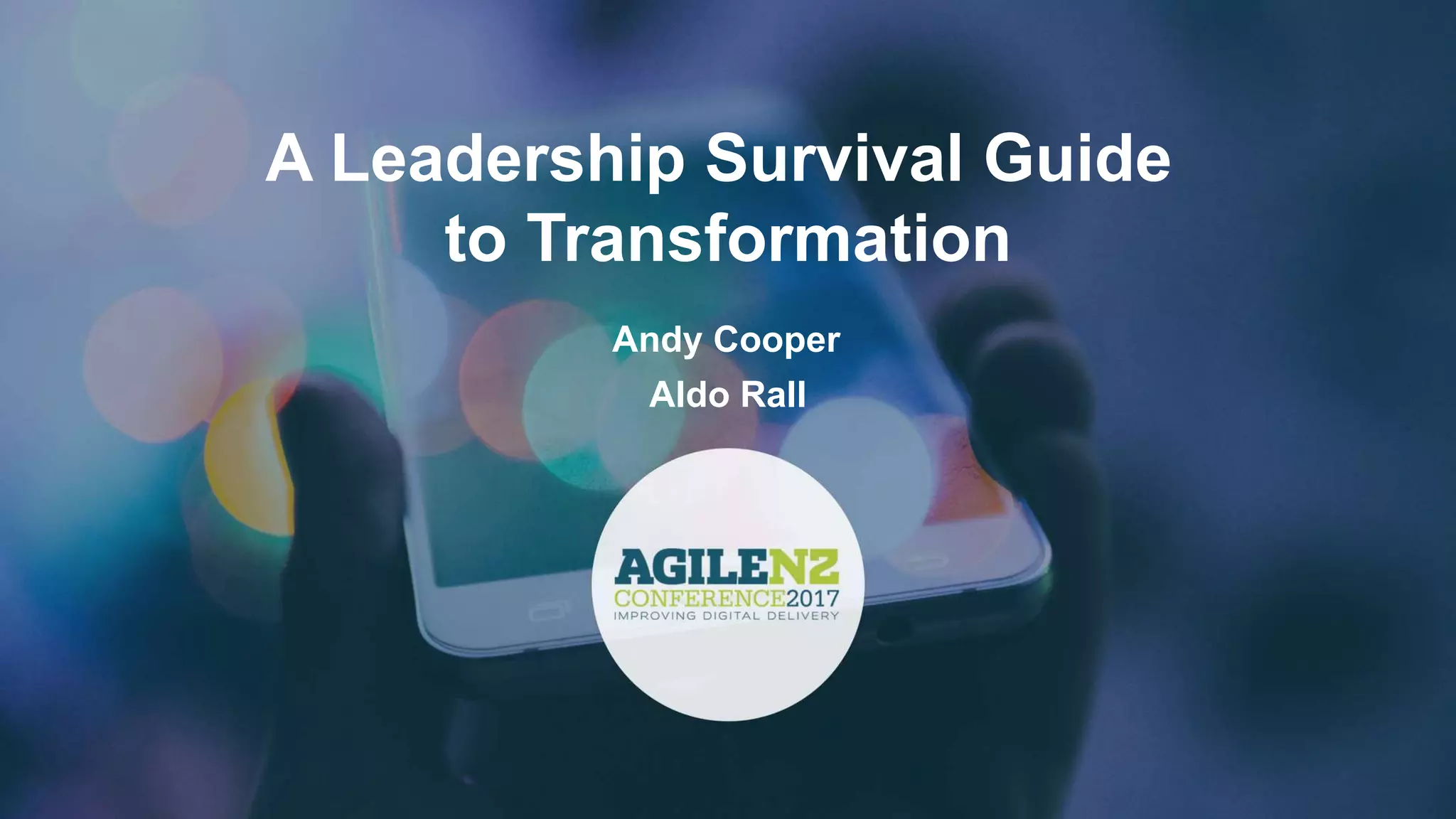The document outlines a leadership survival guide emphasizing the importance of learning agility in navigating transformation challenges within organizations. It discusses key obstacles to adopting agile practices, such as management resistance and traditional methods, while proposing various strategies and tools to enhance learning and adaptability. Ultimately, it highlights that effective leadership involves fostering an environment of continuous learning and psychological safety to drive engagement and improvement.












































